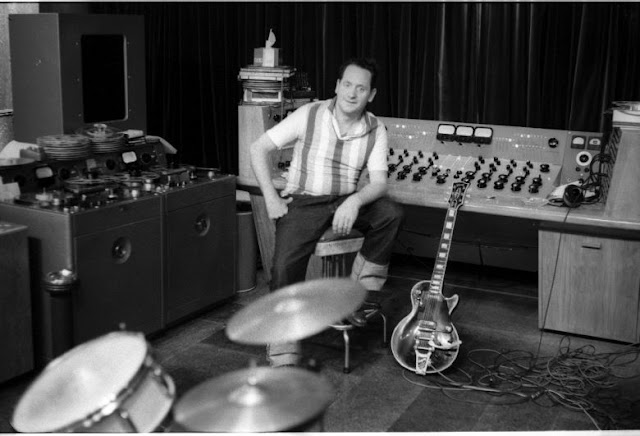AI as a Tool
 |
| Les Paul sitting at his Console, 1958 |
AI won't change music like multi-track recording or MIDI did. Tools assist creativity, they don't eliminate it. To the extent that tools are also machines (as AI is a machine) it could smooth out the rough edges of "hand tools"; Tools are also a work-in-progress, and improvements in the tools used in creativity make innovation more of a possibility (simply by creating automatic action chains), but you always get the same results--like strictly following a recipe. When we are doing something truly creative, the action chains are more organic. Constraints (imperfections) in tools (or simply collecting tools) potentially stop the free flow in creativity. Or we embrace the constraints (and the pursuit of more tools) and make something by workaround (which I prefer). The question then becomes do we put all of our creative energy in tool-creation and refinements, then get on with the separate business of creative production, i.e. the chain of idea to prototypes and iterations to final result? (Abeyance of the creative work also is a potential producer of regret: "I wish I would have made something with all those tools").
We assume that time and energy are an infinite resource. This is undeniably false--you have to seize the day with whatever you have. Very often after I've finished something I always think something could have been better. If the execution wasn't optimal then that isn't a matter of blaming the inadequacies in the tools. Perhaps the issue is that we don't understand what existing tools are capable of. So the idea of using AI for production (side-stepping human creativity) still makes no sense to me. Multi-track recording, and to some extent MIDI, are fully-matured tools that can be refined by extension. AI has a long way to go to get to that level.
Andy Clark touched on this in the (somewhat wonkish) book Surfing Uncertainty:
"Work in 'classical artificial intelligence' offered a rather direct solution to this problem. Conventional symbolic approaches used systems of 'pointers' in which one essential arbitrary digital object could be used to access another, which might itself be used to access another, and so on. Within such a system a symbol could be viewed as a small, usually arbitrary, representation of an object that provides and remote access path to a fuller representation of the same object. In this way, many small symbols can be put together to create a fully articulated representation of some larger structure. Such systems could indeed represent structured relationships in a manner that allowed for easy sharing and recombination of elements. But they proved brittle and inflexible in other ways, failing to display fluid context-sensitive responsiveness, and floundering when required to guide behavior in time-pressured real-world settings. (p.24)
***
[11/6/2025: What a difference 5 years makes, but people who started using it 3 years ago see it as the only way of working. Already there is an intellectual sophistication of using AI. On Reddit the other day someone posted A Critical Defense of Human Authorship in AI-Generated Music. To non-musicians it is easy to place a philosophical position before craft. I am of two minds about it since I am a trained musician, as well as an untrained visual artist. Everything I do in art is essentially postmodernist, and I love working in this way. But I tend to get homesick for both: if I've left craft for a while I tend to miss it. I see the possibility of a happy medium using both as hybrids].


Comments